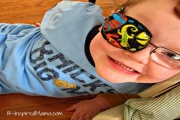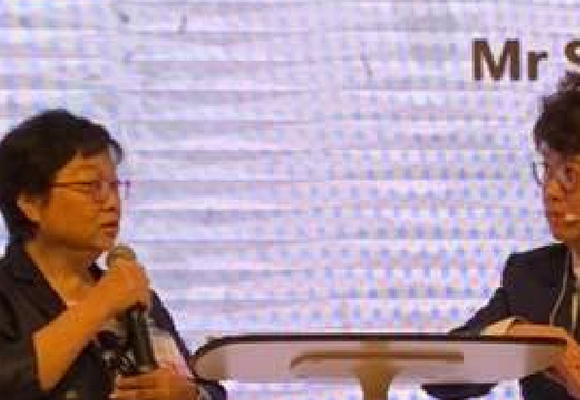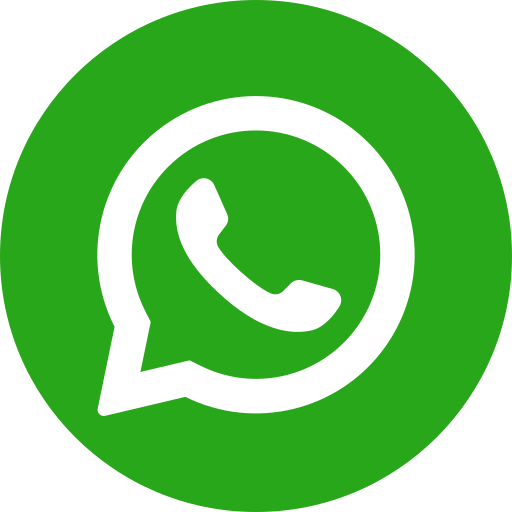Age Is Not A Limiting Factor For Fixing Lazy Eye

A Child’s Age is Not a Limiting Factor in Fixing Lazy Eye
National Eye Institute (NIH/NEI) Study Finds that Lazy Eye Can be Successfully Treated in Older Children
A National Institute of Health, National Eye Institute (NIH/NEI) supported research study has disproven the long held belief that children with lazy eye, or amblyopia, can’t be helped after a known cut-off age. In the past, the cut-off age for treating lazy eye was said to be anywhere from seven (7) to nine (9), ten (10) or twelve years old (12).
The multi-site NIH/NEI research study, which included 507 children aged 7 to 17, found it’s possible to improve eyesight at least two lines on the 20/20 eye chart, even in older children. “This study confirms that older children and teenagers with amblyopia [lazy eye] may benefit from treatment even at an age traditionally regarded as too old for success,” reports Michael X. Repka, M.D., Wilmer Eye Institute of Johns Hopkins University School of Medicine, one of the study’s lead authors.
The research, reported in the Archives of Ophthalmology, opens up new possibilities for children whose lazy eye wasn’t detected early in life or who didn’t receive treatment. The study found that 53% of 7 to 12 year-olds had improved vision following treatment. In addition, 47% of 13-17 year old children who hadn’t previously been treated for their lazy eye also gained improved eyesight
Amblyopia or How to fix Lazy Eye – Poor Sight in One Eye Only
Amblyopia or lazy eye usually causes blurred vision in just one eye which contributes to poor two-eyed vision and depth perception. Amblyopia commonly develops in infancy and early childhood and affects about 3% of children. It may develop due to other vision conditions such as a crossed or wandering eye (strabismus). Or, it can occur because of unequal vision in the two eyes caused by astigmatism, farsightedness or nearsightedness.
Previous to this scientific study, most eye doctors thought that this visual condition had to be treated prior to the various cut-off ages ranging from 7, 9, 10 or 12 at the latest. Early childhood is considered to be the period of critical visual development for the child and it was thought that lazy eye had to be treated prior to the end of this “critical period,” in order for improved vision to be attainable. To the contrary, the National Eye Institute study provides substantial evidence that lazy eye can be successfully treated in many older children. “It shows that age alone should not be used as a factor to decide whether or not to treat a child or adolescent for amblyopia. The opportunity to treat amblyopia does not end with the pre-school years,” according to study co-chairman, Mitchell M. Scheiman, O.D., Pennsylvania College of Optometry.
What is Lazy Eye and How to fix Lazy Eye?
As the name implies, a “lazy eye” is one that does not take part fully in the seeing process. The images the lazy eye sends to the brain are ignored (suppressed). As a result, only the better eye is used for sight by the brain. If not treated, loss of vision can occur in the lazy eye.
A key to successful treatment of lazy eye is to encourage its use whenever possible. Corrective eyeglasses or contact lenses can sometimes encourage the use of the lazy eye by providing it with the clearest possible vision. Occlusion of the better fellow eye with either patching or blurring eye drops (atropine) can also force the use of the lazy eye. In addition, doing near visual activities with the occlusion, such as reading, using a computer, and playing video games, will stimulate greater use of the lazy eye. All of these approaches were used for children treated in this study.
While not specifically evaluated in this study, for many years optometrists have also prescribed structured programs of visual activities to enhance treatment success. Called vision therapy or visual training, these exercises support the development of improved vision in patients with lazy eye. They stimulate the eye-brain connection and force the lazy eye to take a more active part in seeing.
This research, conducted at 49 eye centers across the U.S., including the Bascom Palmer Eye Institute, Mayo Clinic, The Emory Eye Center, The Ohio State University, Southern California College of Optometry, and the State University of New York, College of Optometry, will have a significant impact on how eye doctors manage children with amblyopia. “Doctors can now feel confident that traditional treatments for amblyopia will work for many older children,” says Paul A. Sieving, M.D., Ph.D., director of the National Eye Institute.
Although this research supports the value of treatment of lazy eye for older children, it may be several years before it is fully adopted in clinical practice in many doctor’s offices. According to Dr. Repka, “There is often a significant delay between the publication of new medical research and its universal application by doctors.” Therefore, parents should no longer accept medical advice that says that no more can be done for a child with lazy eye because of his or her age.
“If needed, parents should seek a second opinion from an eye doctor with experience in treating lazy eye in children of all ages. With proper optical correction and an active treatment program, including eye patching and vision therapy to stimulate vision in the lazy eye, many children can obtain improved vision regardless of age,” reports Dr. Scheiman. For more articles on this topic, see:
Brief History of Treatment Methods for Helping Amblyopia (or How to fix Lazy Eye) from 900 A.D. to Present – a Millenium of Little Change – Until Now
by neurobiologist Susan R. Barry, Ph.D. and Rachel Cooper, Co-author of What is Amblyopia or How to fix Lazy Eye? and Adult Patient Who Overcame Lazy Eye with Vision Therapy
Why Are Older Amblyopic Children, Teenagers and Adults with Lazy Eye Still Being Told That Nothing Can Be Done for Them? Successful Improvement of Eyesight with Vision Therapy for Older Patients with Amblyopia Proven Possible by Many New Scientific Studies>
by Susan R. Barry, Ph.D. and Rachel Cooper
Successful Improvement of Eyesight with Vision Therapy for Older Patients with Lazy Eye Proven Possible by Many New Scientific Studies
by Susan R. Barry, Ph.D. and Rachel Cooper
Reference:
Scheiman MM, Hertle RW, Beck RW, Edwards AR, Birch E, Cotter SA, Crouch ER Jr, Cruz OA, Davitt BV, Donahue S, Holmes JM, Lyon DW, Repka MX, Sala NA, Silbert DI, Suh DW, Tamkins SM; Pediatric Eye Disease Investigator Group. Randomized trial of treatment of amblyopia in children aged 7 to 17 years. Arch Ophthalmol. 2005 Apr;123(4):437-47.


